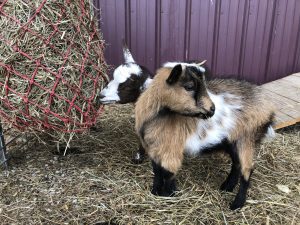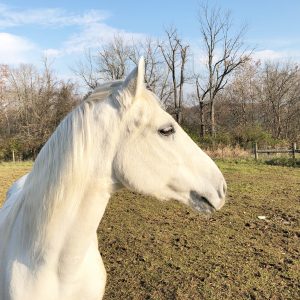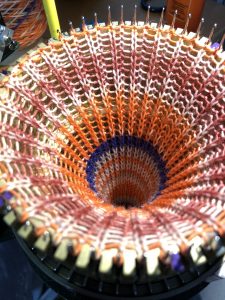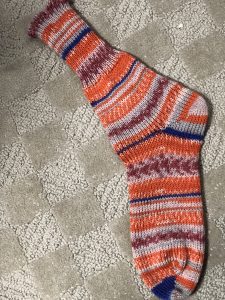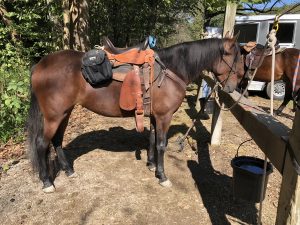
I recently took an online class from Olgalyn Jolly. Olgalyn is a knit textile and knitwear designer in NYC. She also teaches at the Fashion Institute of Technology and the Textile Arts Center. When I saw she was offering an online class, I quickly signed up. Her class answered my many questions about sewing knits. I highly recommend her class if you want to learn about sewing knits with a sewing machine and/or serger. When I say, “knits,” I am referring to sweater knits, not the thin commercial knit fabric. To learn more about Olgalyn’s class click here.
This tutorial is for simple cut and sew knit beanie hats. I have always wanted to make cut and sew hats. They are simple and quick. This is also a good way to use up leftover knit fabric and swatches. I knit these hats (in photos) with a Passap E6000 and Silver Reed SK840. Single bed fabrics are thin and pliable while double jacquard fabrics are thicker (warmer). The thickness of the fabric may affect the seams. The thicker the knit, the bulkier the seam. This is not a concern, just something I thought I should point out.
You can use any knitting machine to knit your fabric or even use hand knit fabric. You will need a rectangle of knit fabric which is wide enough to go around your head (minus ease), and tall enough to reach the top of your head/crown.
Use a flexible tape measure to measure the circumference around your head just above your ears. Also measure from the middle of your ear to the top/middle of your head. Once you have these measurements, you will know what size rectangle you need to knit. Since knit fabrics have stretch, you will need to add some negative ease to your head circumference measurement to make the hat tight enough to stay on. I am not going to go in detail about how to get gauge/size for your hat. This information can be found easily online or in hand knitting books.
Hats are best when the fabric has some stretch. Avoid 100% cotton. It has no stretch. Wool works very well. Synthetics are also good. Remember the seams are more visible on thicker knits like bulky knits and double bed jacquard. Below, all the hats are double bed jacquard except for the green/gold which is a single bed fair isle. I do find that wool steams very well and the seams tend to be nearly invisible. The hats shown below where knit with mill end yarns/synthetics. I did not pay much attention to pattern repeat or matching. If you want a more invisible seam, be sure to have a perfect pattern repeat (this can easily be adjusted in DesignaKnit) and pin the back hat seam carefully before sewing the seam.
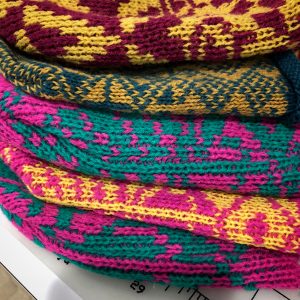
Below is a rectangle of fabric knit in double bed jacquard knit on a Passap E6000. This size is good for a women’s medium hat (See ruler measurements in the photo). A starting point for cast on may be to make a swatch 50-0-50 with 100 lock passes (for Passap DBJ). Make a swatch on your machine and figure gauge. You will then know how many stitches to cast on and how many to knit.
I have the fabric laid out with the raw edge at the top and the cast on edge on the bottom. The cast on edge will be the part of the hat above your eyes. The raw edge/live stitches will be the crown seams. In the photo below, you are looking at the right side (patterned side) of the fabric. You need to fold the fabric with the right sides (patterned sides) together so you will be looking at the back (wrong side) of the fabric.
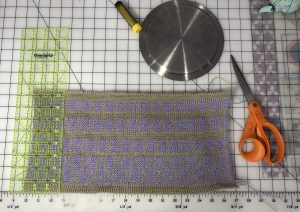
The photo below shows the fabric folded. Right sides are together with the open edge on the left. Be sure to match the edges up good. Pin if necessary. Be sure to sew starting at the cast on edge to ensure the seam matches up perfectly. Take your fabric to the sewing machine and sew the seam from the cast on edge to the top live stitches/crown.
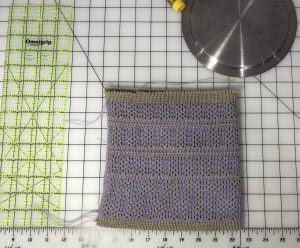
Below shows the seam sewn. Steam open the seam to flatten.
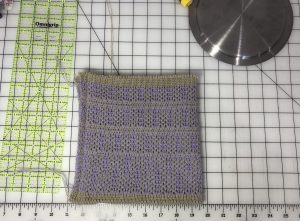
Photo below- Now you need to use something round to mark the corners of the crown/live stitch edge. A plate of any size will work. Place the plate by the corner and mark the round edge line. (I am using a yellow chalk marker to mark my lines.). Mark both sides. Then sew on the line. There will be an open gap that is not sewn (see note on next photo). Use a serger or a zig zag to sew another stitch line by first line to reinforce edge for cutting.
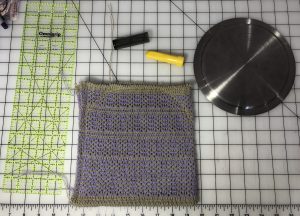
Below shows after sewing. Now cut off excess fabric. Note: The top/middle of the crown seam of the hat is not sewn. Only the corners have been sewn.
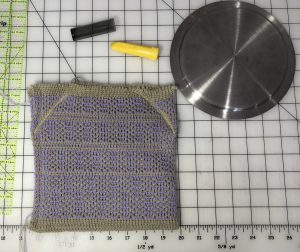
Below- Excess fabric cut off.
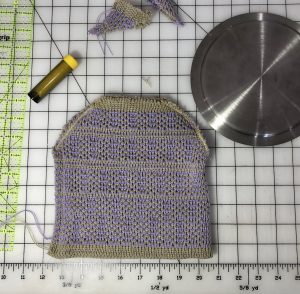
Below- Now you will fold the hat in half (the opposite direction) to sew second crown seam.
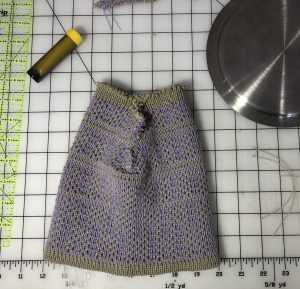
Below- Mark the seam by rounding both corners. You will be sewing across the center seam to close the gap. Be sure mark your sewing line so you do not leave a hole where the two crown seams intersect.
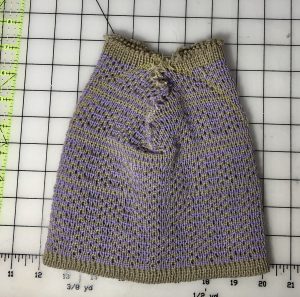
Below– After sewing the seam. Be sure to sew the zig zag or serge the seam to reinforce the edge.

Below– Cut off excess fabric.
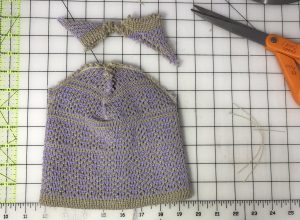
After cutting off excess fabric, steam the seams to flatten.
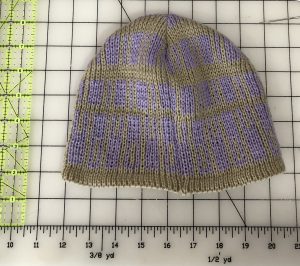
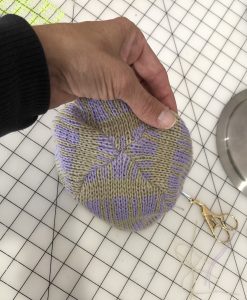

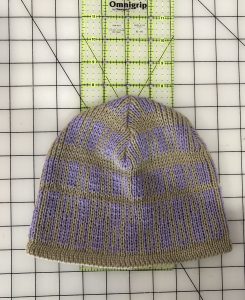
If you have any tips to share, please post in the comments.

